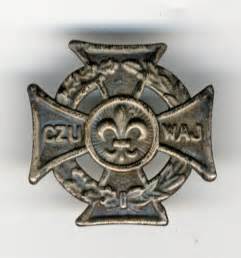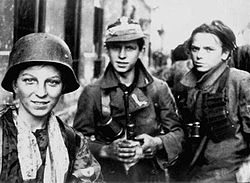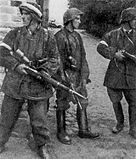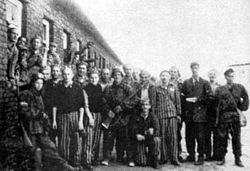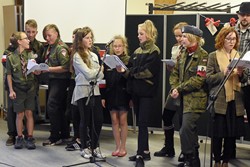“The Gray Ranks”
When you think of The Boy Scouts, what are the first images that come to mind? Camping in the woods, doing good deeds, setting up tents, learning how to use a compass, hiking in the wilderness?
Well, yes, all that but much, much more in the history of the Polish Scouting and Guiding Association.
Founded in 1916 during WWI, Polish Scouts fought in the Great Polish Uprising and the Polish-Ukrainian War in 1918; the Polish-Bolshevik War in 1919 and the most devastating war in human history, WWII.
Banned by the Nazi-Soviet regimes when they overran Poland, they went underground. They adopted a code name, “Szare Szeregi” – The Gray Ranks. Under the leadership of Scoutmaster Florian Marciniak, they began clandestine operations. They hooked up with the Home Army, made up of Polish military that escaped death or capture.
Scouts between 12-14 began to distribute anti-Nazi propaganda to German refugees in Lithuania and other Eastern European countries. They had the leaflets signed with their initials, SS, to create confusion with the infamous German SS, The SchutzStaffel.
Boys between 15 and 17 attended Combat Schools, secret schools that taught surveillance, reconnaissance and small acts of sabotage.
Boys over 17 joined combat assault units. They targeted prominent Nazi officials, raided POW camps and performed large-scale sabotage. They executed three high-ranking SS officers that were known to have committed atrocities against Polish civilians.
Between August 1943 and February 1944, The Gray Rank Scouts and The Home Army attacked German border posts. Border posts were heavily guarded and the fighting was intense. There were some 13 attacks and the Scouts took some casualties.
SS-Brigadefuhrer Franz Kutchera was a notorious war criminal infamous for his fanaticism and brutality. Mass executions of Jews and Eastern European Slavic people occurred on his watch. The Gray Rank boys killed him in early February 1944 and relieved Europe of a monster.
The Warsaw Uprising in August of that year saw eager, battle-hardened teenagers of the Scouts ready to take back their country from the Nazi regime. Their ranks had grown to over 8000 and now teenaged girls were involved in auxiliary activities including ammo delivery, medical care and propaganda.
One of the first acts of the Scouts during the Uprising was an attack on the Gesiowka death camp in Warsaw. They captured a German Panther tank that led the assault. The Germans were so incensed that a group of teenaged boys had the temerity to fight them, they fought back vigorously, knowing what would happen to them if they lost the camp to a group of children.
There were substantial casualties on both sides, but in the end, the camp was liberated. Many of the freed prisoners, mostly Jews, joined the uprising.
Unfortunately, Hitler, wanting to make an example of Poland to pressure the British to come to terms with him, wasn’t about to allow a group of teenagers and irregular troops defeat the Wehrmacht-Heer. He issued orders to crush The Uprising without delay and don’t go out of your way to take prisoners.
In 63 days of unrelenting, intense fighting, The Uprising was crushed by the overwhelming power of German Panzers and crack Waffen SS units. The Gray Ranks suffered devastating casualties, with some units losing 70% of their ranks.
The Polish Scouts gave up their childhood to fight for their country.
Those who survived retreated to the forests but they never recovered. The retribution that followed the failed uprising was a horrendous bloodbath carried out by the Germans against the Poles.

